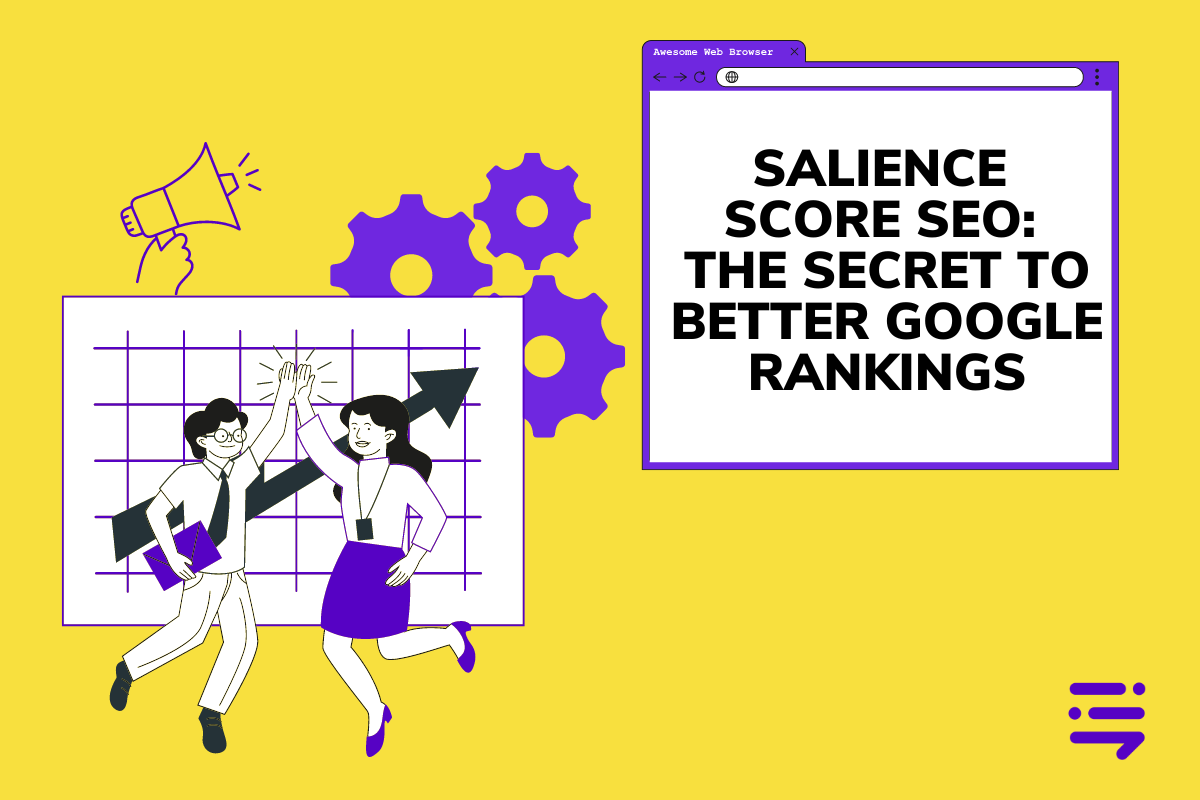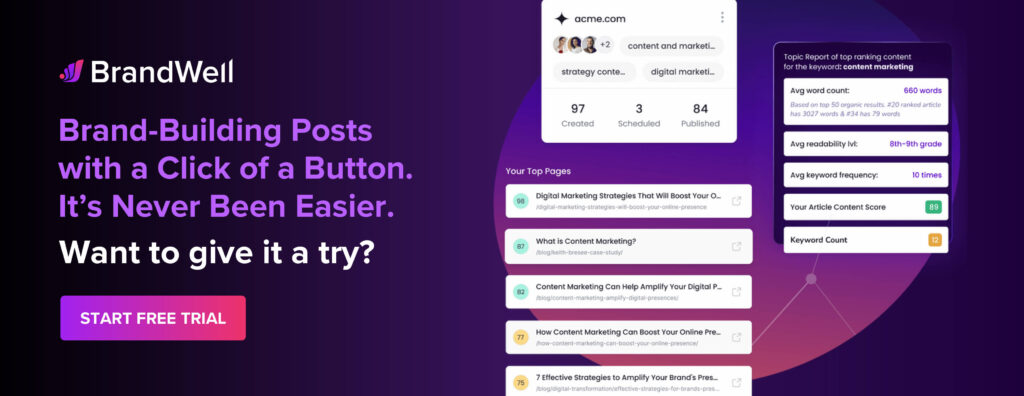Discover top guides, trends, tips and expertise from AIO Writers
Salience Score SEO: The Secret to Better Google Rankings
Farnaz Kia
Friday, 28th Jun 2024
Every business wants to rank well on Google, but getting to Page One is no longer as simple as stuffing your content with keywords.
There’s a behind-the-scenes player that’s making a huge difference in SEO: the entity salience score.
This nifty metric, part of Google’s sophisticated language processing system, measures how relevant and important the entities in your content are.
In simpler terms, it helps Google understand the significance of what your content is about.
By understanding entity salience scores, you can tweak your content to not only rank higher but also connect better with your audience.
Ready to dive in and see how entity salience can work for you? Let’s explore the ins and outs of salience score SEO and how you can use it to give your SEO strategy a serious boost.
Table Of Contents:
- What is Salience Score SEO?
- Why Should You Care About Salience Score SEO?
- 5 Tips to Optimize Your Content for Salience Score SEO
- Analyze Entity Salience and Boost Scores in One Platform
- FAQs: Salience Score SEO
- Conclusion
What is Salience Score SEO?
Salience score SEO involves optimizing your content to help search engines better understand the main topics, or entities, discussed in your text. By making sure those entities are clear and prominent, you increase your chances of ranking for relevant keywords and drawing in your ideal readers.
What is an Entity?
In the context of salience score SEO, an entity refers to a specific and distinct item that can be identified and understood by Google’s Natural Language Processing (NLP) algorithms.
Entities are typically nouns and can include people, places, organizations, events, products, and more.
For example, “Apple Inc.,” “New York City,” “Eiffel Tower,” and “The Great Gatsby” are all entities.
Google’s algorithms analyze your content to identify these entities and determine their relevance to the overall topic of your page. The salience score measures how prominent and significant each entity is within the content.
A higher salience score indicates that an entity is more central to the main topic of the text, which can influence how well your page ranks for related searches.
How Does Google Determine Salience Score?
Search engines, especially Google, use powerful natural language processing technology to interpret and understand content just like a human would.
NLP looks at the following factors to determine salience scores:
- Word Order and Position: Where entities are placed in a sentence, paragraph, or even within the whole document has an impact. A mention right at the start carries more weight compared to something buried in the middle of a long paragraph.
- Sentence Subject: The subject of your sentence (who or what is performing the action) typically has a higher salience score.
- Linguistics: NLP is clever. It analyzes how words and phrases relate to each other. Longer, more complex sentences with interconnected entities are better. The deeper the entity is woven into the structure of a sentence, the more it stands out to search engines.
- Entity Clarity: If an entity is consistently capitalized and referenced in the same way, it receives a boost. Avoiding ambiguity with names, synonyms, or abbreviations improves clarity and, in turn, the salience score.
- Reference Count: Although not as crucial as other factors, the frequency with which an entity is mentioned does contribute. Using variations of an entity like synonyms or pronouns can strengthen its salience as it reinforces the entity’s presence in the text. Remember, overdoing it and “keyword stuffing” will have the opposite effect.
- Entity Graph: This gets even more interesting. Just like pages have a ranking based on backlinks, entities themselves have connections within a “knowledge graph.” The more relevantly connected your entities are in Google’s vast database of information, the stronger the entity’s presence. Google’s knowledge graph essentially acts as a vast interconnected network of entities.
Why Should You Care About Salience Score SEO?
Here’s why this matters so much to you: Google’s goal is to deliver the most relevant content for each user’s specific search query. If Google can confidently determine the main entities in your content through salience, you’re much more likely to rank well for those relevant terms.
Essentially, you’re helping Google do its job by giving it clear, understandable cues about your page’s topics.
Think of it as a clear signal to the search engine, letting it know, “Hey, this page is all about these specific entities, so show it to people who are looking for that.”
This results in better rankings and ultimately more of your ideal audience finding your content.
How to Check for Salience Scores
To give you some real-world insights, one of the most convenient tools for analyzing salience scores is the demo of Google’s Natural Language Processing API.
By inputting your text into this tool, you can see which entities Google picks up on. It will highlight each entity and assign them their individual score ranging from 0 to 1 — the closer to 1, the more salient the entity is in the text.
Using Google’s natural language API will help you understand how Google “sees” your content on a more fundamental level.
Here at BrandWell, we’ve made it easier for you to check real-time salience scores — by embedding this technology into our app! NLP scoring is now included in our suite of SEO tools so you can check the salience score of your top keywords and entities and compare them to your competitors. I will show you later how to do this when editing your RankWell-generated blog post.
5 Tips to Optimize Your Content for Salience Score SEO
Now that you understand the basic concepts, let’s look at some ways to optimize for salience score SEO.
Remember that the goal is not just to boost a meaningless number. It’s about clearly and comprehensively demonstrating to Google what your content is truly about.
Here are a few tips to get you started:
1. Create a Clear Content Structure
Search engines love well-structured content. Make liberal use of headers, sub-headers, bullet points, and numbered lists.
When you break up your content in this manner, it not only improves the user experience but also makes it much easier for search engine crawlers to digest your content.
When writing your headings and subheadings, try to include your target keywords where it sounds natural.
2. Front-Load Your Key Entities
Ensure that the most important entities are mentioned early and frequently in your content — preferably at the beginning of paragraphs and sentences — to immediately signal their importance.
However, avoid keyword stuffing; your entity mentions should be natural and contextually relevant.
3. Maintain Consistency With Entities
When referring to a specific entity throughout your content, strive for consistency. If you use a particular term or phrase, stick with it, as this helps solidify its salience.
Avoid using too many synonyms, as this can confuse search engines.
4. Leverage Schema Markup
While not directly related to salience score, using schema markup can significantly boost your content’s visibility.
Schema markup involves adding specific code to your website’s HTML that helps search engines understand the context and relationships between different pieces of information.
This additional layer of structured data provides explicit clues about your content, reinforcing entity prominence, and making it easier for search engines to categorize and display it accurately.
5. Think Like a Search Engine
Before hitting that publish button, step back and review your work.
Put yourself in the shoes of a search engine.
Ask yourself if the main points, topics, and their interconnections are clear and easily identifiable.
Is the language easy to comprehend? Would a search engine be able to quickly and accurately discern the core entities of your content?
By approaching your writing with this mindset, you can make necessary tweaks to enhance clarity and boost the overall salience of your content.
All these may sound overwhelming to you — as they did to me the first time I heard the term “salience score” from my SEO guy.
But now thanks to AI, you can view salience scores for each entity in your content with just a click of a button!
Analyze Entity Salience and Boost Scores in One Platform
BrandWell has integrated NLP scoring into its comprehensive SEO suite so you can generate entity salience scores right inside the text editor.
Here’s how to do it:
While editing your AI-generated blog post, click the “Optimize” tab on the right column and look for the SEO-NLPs option.
When you click the SEO-NLP box, the AI will automatically scan your blog post and compare it to your top three competitors.
What you will get is a list of the top entities the AI detected in your content, with individual salience scores, and how your competitors used the same phrases in their content.
Following our 5 tips on how to optimize content for salience score SEO, you can now begin editing your post based on this report.
After adjusting your keywords and entities, click the re-scan button to update your scores.
Remember, aim for an entity salience score that’s close to 1 for the most important entities related to your topic. These should be the primary focus of your content.
FAQs: Salience Score SEO
What is the Salience Score System?
The salience score system is a method that uses natural language processing (NLP) to identify and score the importance of various entities within a given text. It helps search engines like Google to better understand and contextualize information, thus improving the relevancy of search results.
Think of it as a metric to highlight the prominence and importance of topics in your content. Scores closer to 1 signify greater salience, whereas those closer to 0 indicate lesser significance.
What is Salience in NLP?
Salience in NLP refers to the identification and prominence given to key entities, topics, or concepts within a piece of text. It focuses on understanding which elements are most noticeable or important to the reader’s understanding.
Essentially, it mirrors the human cognitive process of focusing on what is considered most relevant when consuming information.
Conclusion
BrandWell‘s built-in NLP scoring — which automatically calculates entity salience scores while you’re in the text editor — makes it easier to bring salience insights directly into your workflow. Instead of spending hours manually sifting through content to figure out which entities are most important, AI can do it in a snap.
This smart tool can analyze your text, identify key entities, and determine their relevance.
Best of all, you don’t have to leave the app just to run your content through Google’s NLP API.
Everything you need to create exceptional, high-ranking content is right inside the RankWell long-form content writer.
By paying close attention to entity salience scores and crafting well-structured, genuinely helpful content that aligns with these scores, you significantly increase your chances of showing up for the search queries that truly matter to your business.

UNLOCK YOUR POTENTIAL
Long Headline that highlights Value Proposition of Lead Magnet
Grab a front row seat to our video masterclasses, interviews, case studies, tutorials, and guides.



